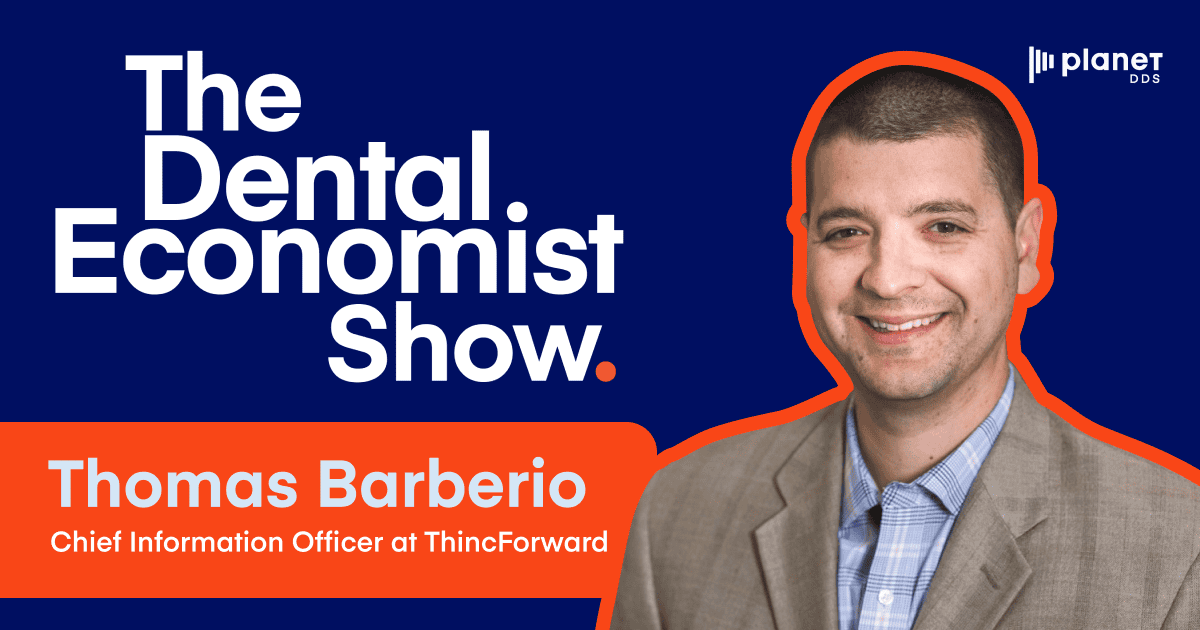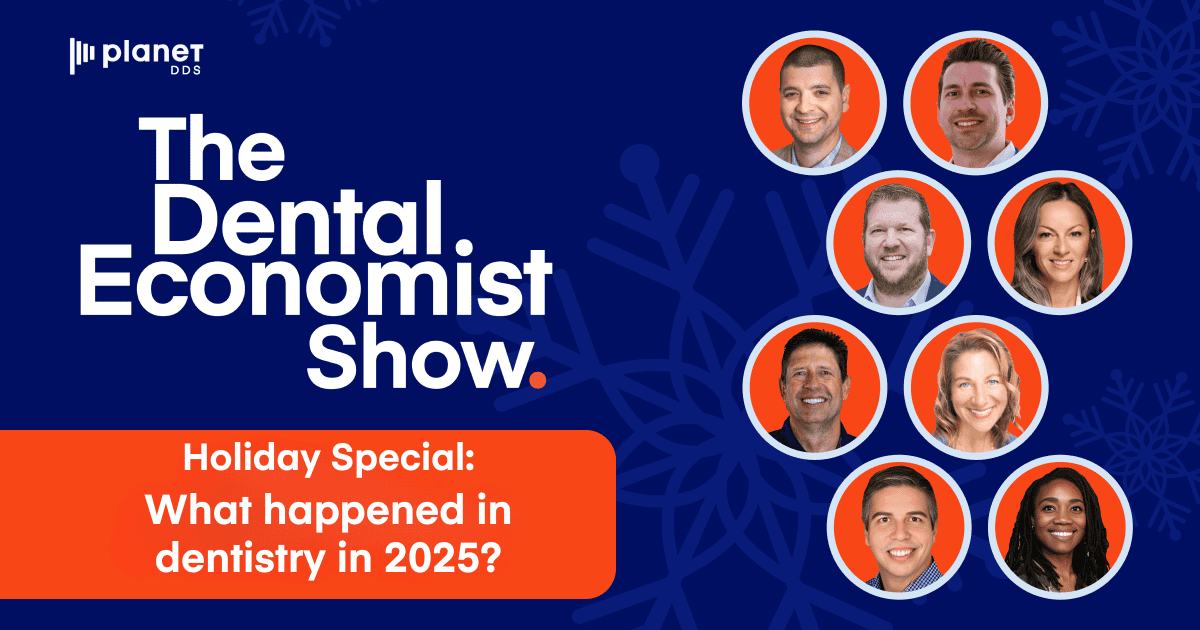Tom Barberio on Why Dental Practices Are at Risk and What to Do

As dental practitioners, do you invest enough capital into protecting your practice with robust IT and security systems? The latest episode of The Dental Economist Show uncovers the reality of dental security today and why 70 percent of dental practices are at risk of a security breach. Tune in to hear host CRO Mike Huffaker of Planet DDS and Tom Barberio, CIO at Thinc Forward, chat about dental technology and IT security.
What you’ll learn:
- How to leverage dental technology as a growth driver and business enabler
- Why dental practices need specialized “dental IT” support versus general IT services
- How to evaluate AI solutions in dentistry beyond the buzzwords
- Why cloud solutions can reduce hardware costs and extend equipment lifecycles
- The framework for successfully implementing new technology without disrupting operations
- How to avoid common pitfalls of product sprawl and redundant IT services
- The strategic advantages of consolidating IT services across multiple locations
Tune in for a guide of actionable strategies on taking dental technology and your practice’s security to the next level!
Episode Highlights
In this episode, Mike Huffaker welcomes Tom Barberio for a chat on dental technology, why cloud-based solutions are critical to business growth in the industry today, and everything in between. Here are some highlights from the show:
The evolution of dental technology strategy
Barberio reveals how dental practices have transformed from viewing technology as a basic necessity to leveraging it as a strategic business driver. This shift, particularly accelerated post-COVID, shows practices now actively seeking ways to use technology to enhance patient experience and drive revenue growth.
He suggests that modern dental organizations recognize that staying competitive requires viewing IT as an enabler rather than just a cost center. Strategic technology implementation helps practices improve operational efficiency while meeting rising patient expectations for digital experiences.
The how, what, and why of “technical debt”
Barberio introduces the concept of “technical debt” and its impact on dental practice operations. He explains practices often prioritize purchasing new clinical equipment while neglecting core infrastructure updates, creating a compounding technology deficit.
He recommends implementing a quarterly budget approach for consistent technology updates rather than facing large, unexpected costs. By compartmentalizing IT investments into manageable portions, practices can maintain modern infrastructure while still investing in revenue-generating equipment.
The reality of AI implementation
Barberio emphasizes the importance of looking beyond AI buzzwords to identify specific operational needs and solutions. Rather than seeking a one-size-fits-all AI solution, practices should prioritize their specific needs across clinical, administrative, and patient engagement areas. The key to successful AI implementation lies in understanding exactly how each solution will address concrete business challenges.
By carefully evaluating vendors against prioritized needs, practices can avoid wasting resources on unnecessary features. This focused approach helps practices select AI solutions that deliver measurable improvements in efficiency and patient care.
Successful technology implementation 101
Barberio emphasizes that successful technology rollouts require thorough planning and buy-in from all stakeholders. Many implementations fail because organizations rush deployment without proper vetting from front office, back office, and clinical perspectives.
Organizations should prioritize proper communication and training to ensure staff adoption and prevent negative perception of new technologies, which significantly increases the likelihood of successful technology adoption and positive ROI.
Optimizing IT investments and avoiding redundancy
Barberio addresses the common problem of “product sprawl” where practices accumulate redundant software solutions. Many organizations unknowingly pay for multiple products with overlapping features, particularly as they grow through acquisitions. Conducting regular audits of technology solutions can identify opportunities to consolidate vendors and reduce costs.
Streamlining IT services across multiple locations can achieve significant economies of scale. This optimization strategy often reveals thousands in potential savings per location while improving operational efficiency.
About The Dental Economist Show
Don’t miss insightful conversations with industry experts on the latest trends and top strategies to grow your DSO or dental business. Tune in to The Dental Economist Show each week as we meet at the intersection of profit and purpose.



